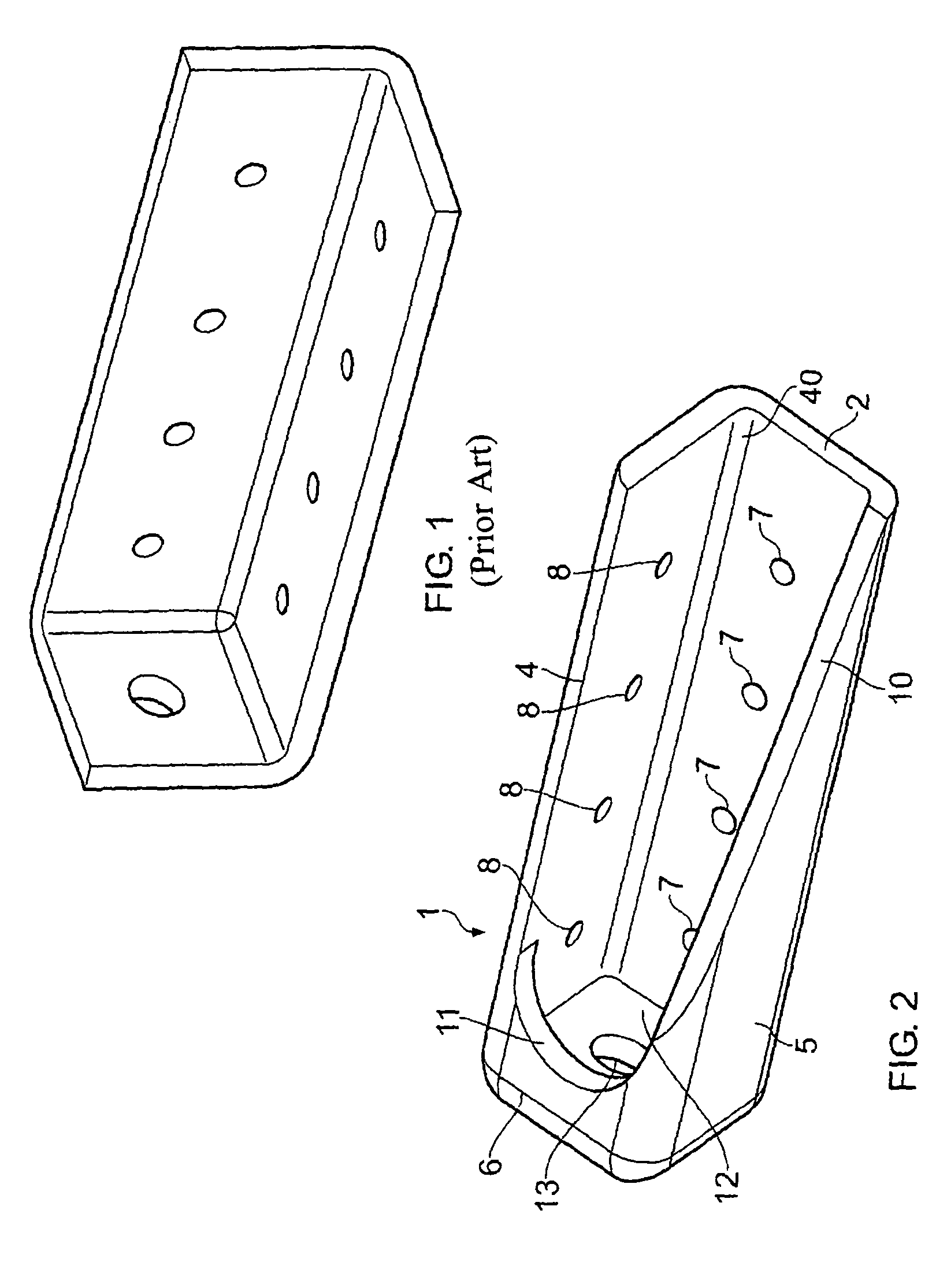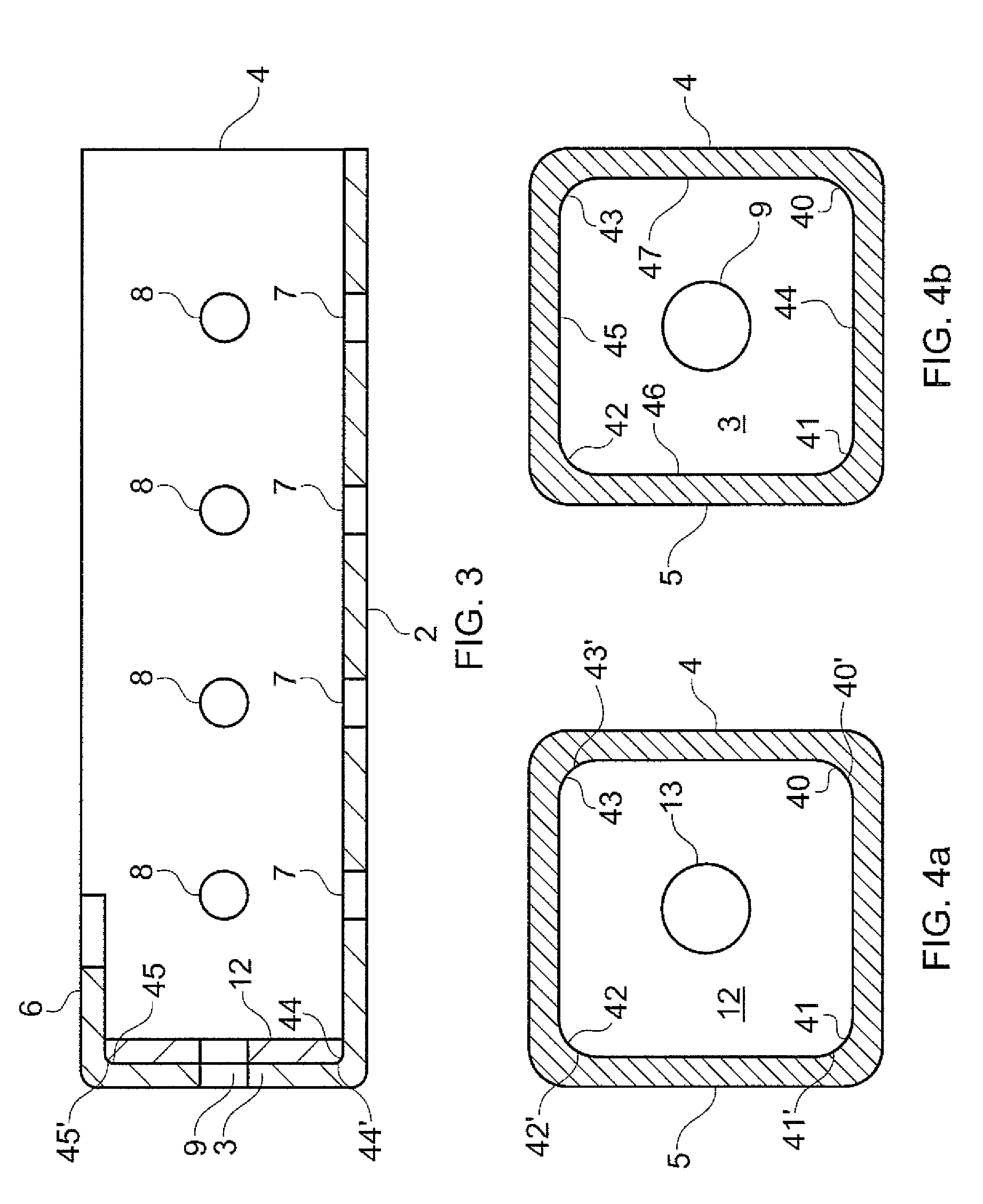Fitting
a technology of fittings and walls, applied in the field of fittings, can solve the problems of difficult manufacturing of variations in thickness in composite materials, particularly laminates, and difficulty in forming fittings of the required strength without having to increase the thickness of the walls of the fitting to unacceptable levels, so as to reduce weight and reduce weight
- Summary
- Abstract
- Description
- Claims
- Application Information
AI Technical Summary
Benefits of technology
Problems solved by technology
Method used
Image
Examples
Embodiment Construction
)
[0037]Referring to FIGS. 2-4b, a corner fitting 1 comprises a composite part having a base 2, an end wall 3, a left side wall 4, a right side wall 5, and an upper wall 6 which meet at eight corners 40-47.
[0038]The composite part of the fitting 1 is manufactured from a composite material using either pre-impregnated tapes or fabrics, woven textiles or non-crimp fabrics, 3D woven preforms, short or long fibre moulding techniques, or dry fibre placement. The reinforcement fibres may be for example carbon fibre, and the matrix of the composite may be either thermosetting or thermoplastic.
[0039]In the case of a 3D woven preform, the preform (woven into the desired shape) is placed in a moulding cavity, and compressed by a set of mandrels to mould the part into its final shape. After the moulding step, the preform is also infused with matrix material. In the case of a thermosetting matrix, the matrix is cured by heating above its curing temperature during moulding.
[0040]In the case of 2D...
PUM
 Login to view more
Login to view more Abstract
Description
Claims
Application Information
 Login to view more
Login to view more - R&D Engineer
- R&D Manager
- IP Professional
- Industry Leading Data Capabilities
- Powerful AI technology
- Patent DNA Extraction
Browse by: Latest US Patents, China's latest patents, Technical Efficacy Thesaurus, Application Domain, Technology Topic.
© 2024 PatSnap. All rights reserved.Legal|Privacy policy|Modern Slavery Act Transparency Statement|Sitemap



